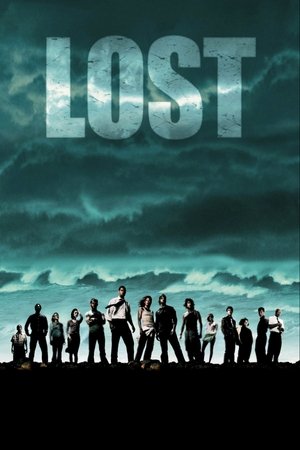The Sky at Night
Your monthly journey through the fascinating world of space and astronomy with the latest thinking on what's out there in space and what you can see in the night sky.
Type: tv
Season: 44
Episode: N/A
Duration: 30 minutes
Release: 1957-04-24
Rating: 8.3
Season 1 - The Sky at Night
1957-04-24
Patrick Moore tells you what to look for in the night sky during the coming month.
The first of a regular monthly series.
1957-05-22
Patrick Moore shows what to look for in the night sky during the coming month.
1957-07-25
Patrick Moore shows what to look for in the night sky during the coming month.
1957-08-19
Patrick Moore shows what to look for in the night sky during the coming month and discusses telescopes with Henry Wildey.
1957-09-19
Patrick Moore shows what to look for in the sky during the coming month and talks to Clive Hare, the boy who first saw the New Comet in England.
1957-10-19
Patrick Moore shows what to look for in the sky during the coming month and talks about the Sun to Colin Ronan, F.R.A.S.
1957-11-16
Patrick Moore shows what to look for in the sky during the coming month and gives, with Reginald Edds and A. H. Degenhardt, a preview of Britain's first Planetarium.
Season 2 - The Sky at Night
1958-01-08
Patrick Moore shows you the wonders of the winter sky during the coming month.
1958-02-05
Patrick Moore discusses with Dr. Roger Jennison of Jodrell Bank how radio astronomy is increasing our knowledge of the Universe.
1958-04-02
Patrick Moore talks about the forthcoming penumbral eclipse of the Moon, and Mercury the nearest planet to the Sun.
1958-04-30
Tonight Patrick Moore is at the Hampstead Observatory. If weather conditions are suitable television cameras will bring live pictures of the moon's surface.
1958-05-28
Patrick Moore talks about the largest planet, its family of moons, and its mysterious changing red spot.
1958-07-23
Patrick Moore explains what it would mean to astronomers if a successful attempt were made to reach the moon.
1958-08-20
Patrick Moore talks about old and new telescopes with A. H. Degenhardt, and shows some of the things which the new telescopes can reveal-for instance, about the Andromeda Galaxy, whose light takes nearly two million years to reach us.
1958-09-17
Patrick Moore talks to America's foremost astronomer, Dr. Harlow Shapley, about his theories on the size and scale of the universe.
1958-12-15
Patrick Moore and Dr. Gilbert Fielder discuss the recent report by a Russian astronomer of an eruption on the moon, and what it reveals about the moon's origin and present state.
Season 3 - The Sky at Night
1959-01-12
Patrick Moore describes the life-cycle of a star and compares the Sun's history with that of Betelgeuse, the vast red giant now visible in Orion.
1959-02-09
Patrick Moore describes the life-cycle of a star and compares the Sun's history with that of Betelgeuse, the vast red giant now visible in Orion.
1959-03-09
Patrick Moore talks about the forthcoming partial eclipse of the Moon and about the planet Mercury, which is at its most visible period for some time.
1959-04-06
Patrick Moore and Roger Griffin talk about these pairs of suns revolving round each other, and how they help astronomers to measure the masses of the stars.
1959-05-04
Patrick Moore discusses with Dr Harlow Shapley, former Director of Harvard College Observatory and one of the world's leading astronomers, our island of stars in the Universe, of which the solar system forms a minute and insignificant part.
1959-06-10
Patrick Moore talks about some of the lesser known bodies of the Solar System.
1959-07-08
Patrick Moore discusses with F. L. Jackson, F.R.A.S., the theory that the planet Venus is covered with a shallow ocean, which might possibly contain single-celled creatures of a primeval type.
1959-08-05
Patrick Moore discusses with Colin Ronan the Northern Lights and other similar natural phenomena.
1959-08-31
Patrick Moore talks about the planet Saturn, which may now be seen low in the south, looking like a fairly bright yellowish star. With its rings of satellites and its retinue of moons, it is one of the loveliest objects in the whole sky.
1959-09-28
Patrick Moore introduces George Alcock who recently discovered two new planets. He also speaks about the eclipse of the sun which is visible here next Friday.
1959-10-26
Patrick Moore talks with Colin Ronan about what is known of the hidden side of the moon, and about the Russian satellite Lunik III, its path through space, its looping of the moon, and the possible information it has brought back with it.
1959-12-14
Patrick Moore gives an astronomer's view of the Star of Bethlehem which is described in Chapter 2 of the Gospel according to St. Matthew.
Season 4 - The Sky at Night
1960-01-20
Patrick Moore talks about the Andromeda nebula, the most distant object in the heavens it is possible to see with the naked eye, and compares it with what is known of our own galaxy.
1960-02-17
Patrick Moore talks about the remote and slow-moving planet which was discovered in 1781. Uranus is sixty-four times as large as the earth, and has 65,000 days in its year, which is eighty-four times as long as ours.
1960-03-16
Patrick Moore explains how the atmosphere interferes with the astronomer's work. He discusses with Dr. Hugh Butler of the Royal Observatory, Edinburgh, how a satellite could be an astronomical observatory.
1960-04-11
The new comet, Burnham's, is now moving steadily closer to the earth, and should be clearly seen in late April. It will then be in the Northern part of the sky not far from the Pole Star. Patrick Moore talks about this and other comets-where they come from, what they are, and how they move.
1960-05-11
Patrick Moore talks about the remote and slow-moving planet which was discovered in 1781. Uranus is sixty-four times as large as the earth, and has 65,000 days in its year which is eighty-four times as long as ours.
1960-06-08
Patrick Moore talks about the centre of our galaxy, which is so obscured by clouds of dust, gas, and interstellar haze that only radio waves come through with evidence of what lies beyond.
1960-06-11
Patrick Moore talks about the moons of other planets in the solar system. Some planets have more than one moon and they range in size from tiny globes, twelve miles across, to giants twice as heavy as the Moon.
1960-08-08
August is one of the best times of the year to observe shooting stars. Patrick Moore talks about meteors and meteorites, and what we know about these sudden arrivals from outside the Earth's atmosphere.
1960-08-30
Patrick Moore talks to Sir Harold Spencer Jones F.R.S. The former Astronomer Royal about measuring distances which are literally astronomical. The greatest distance ever measured is that of a recently discovered galaxy whose light takes five thousand million years to reach the earth.
1960-09-27
Soon the Russians and Americans should be able to land instruments on the surface of the moon. Patrick Moore discusses with Gilbert Fielder, the Director of the Lunar Section of the British Astronomical Association, the conditions to be met with on the moon's surface and some of the problems that may be solved by a successful landing of instruments there.
[Editor's note: The original title of the episode Moonscape. The current iPlayer listing has it as The Moon.]
1960-10-10
Patrick Moore describes how the modern spectroscope has enabled astronomers to find out what different stars are made of and how bright they actually are.
1960-11-07
Patrick Moore talks about his recent visit to Russia and some of the principal observatories there.
Season 5 - The Sky at Night
1961-01-30
Patrick Moore talks with W.M. Baxter, Secretary of the British Astronomical Association, about the mysterious dark areas, many thousands of miles across, on the sun's surface, known as sunspots. Besides discussing whether these affect the weather, they also consider the effect of solar flares on future manned space-travel. Particles emitted from these may turn out to be one of the worst hazards of all.
1961-02-23
Patrick Moore discusses with Dr. F. L. Jackson, of King's College Hospital Pathology Department, the results of certain experiments carried out specially on behalf of 'The Sky at Night'. In these experiments various living organisms have been subjected to conditions of atmosphere and temperature which exist on Mars.
Season 6 - The Sky at Night
1962-01-17
Patrick Moore discusses with Gilbert Fielder the age-old problem of what caused the craters on the moon, and whether the next Russian lunik may solve the problem.
1962-02-21
Patrick Moore discusses with Dr. Francis Jackson bacteriologist of King's College Hospital reports that signs of past life have been found in meteorites They also report on the latest progress of the 'life on Mars' experiments inaugurated last year.
1962-03-14
Pluto, on the boundary of the solar system, is the planet most remote from the earth. Patrick Moore discusses this strange small world whose mysteries have puzzled astronomers ever since its discovery in 1930.
1962-03-21
The recent United States attempt to put millions of fine copper wires into orbit round the earth for communication purposes has aroused fierce objections from some astronomers. Patrick Moore discusses this controversial subject with Colin Ronan.
1962-05-23
Is space empty? Astronomers used to think so, but nowadays it is believed there is matter spread out between the stars so that we look out through a sort of cosmic fog. Patrick Moore talks about what astronomers have learned by studying this matter.
1962-06-27
Every year many people watch the midsummer sun rise over the avenue at Stonehenge. Patrick Moore discusses how much the ancient peoples knew of astronomy and how far the old Stone Circles of Britain were aligned astronomically.
1962-07-16
From the control point of Frank Hyde's amateur radio astronomy station at St. Osyth in Essex, Patrick Moore discusses with Frank Hyde his work there, especially on the problem of whether the planet Jupiter generates its own radio signals.
1962-08-13
With the help of a camera attached to the twenty-four-inch telescope in George Hole's back garden at Patcham, Patrick Moore brings viewers pictures directly from the sky and discusses with Dr. A. F. O'D Alexander, the most beautiful object to be seen there, the planet Saturn.
1962-06-10
The first interplanetary rockets could carry with them bacteria from earth which might contaminate other planets. Returning spacemen might bring back new and dangerous bacteria which could endanger our existence here. Patrick Moore, Sir Bernard Lovell, and Dr. Francis Jackson give their views on this vital aspect of space travel.
1962-10-17
Algol, now visible in the evening sky, was called 'The Demon Star' in ancient times. Certainly it is a most unusual star; periodically it seems to 'wink'. Patrick Moore discusses Algol, and explains its importance.
1962-11-21
The American spacecraft Mariner II should be at its nearest to Venus on about December 14. Patrick Moore discusses with Howard Miles, Director of the Artificial Satellite Section of the British Astronomical Association, what it may reveal about the mysterious cloud-covered planet.
1962-12-19
This year is the bicentenary of the death of James Bradley, third Astronomer Royal.
Patrick Moore and Colin Ronan discuss his work and observations, remarkable for his time, which first proved the earth was moving through space.
Season 7 - The Sky at Night
Season 8 - The Sky at Night
Season 9 - The Sky at Night
Season 10 - The Sky at Night
Season 11 - The Sky at Night
Season 12 - The Sky at Night
Season 13 - The Sky at Night
Season 14 - The Sky at Night
Season 15 - The Sky at Night
Season 16 - The Sky at Night
Season 17 - The Sky at Night
Season 18 - The Sky at Night
Season 19 - The Sky at Night
1975-01-14
Patrick Moore focuses on the planets Uranus, Neptune and Pluto, identifying points of interests about these remote members of the solar system.
Season - The Sky at Night
Season - The Sky at Night
Season - The Sky at Night
Season - The Sky at Night
Season - The Sky at Night
Season - The Sky at Night
Season - The Sky at Night
Season - The Sky at Night
Season - The Sky at Night
Season - The Sky at Night
Season - The Sky at Night
Season - The Sky at Night
Season - The Sky at Night
Season - The Sky at Night
Season - The Sky at Night
Season - The Sky at Night
Season - The Sky at Night
Season - The Sky at Night
Season - The Sky at Night
Season - The Sky at Night
Season - The Sky at Night
Season - The Sky at Night
Season - The Sky at Night
Season - The Sky at Night
Season - The Sky at Night
YOU MAY ALSO LIKE



















